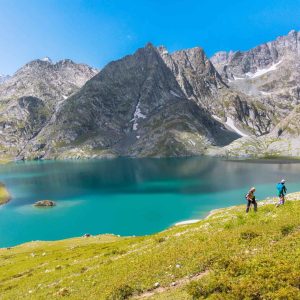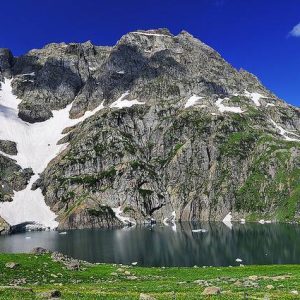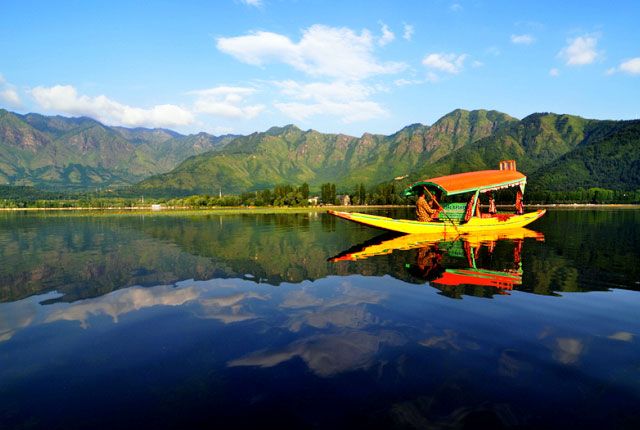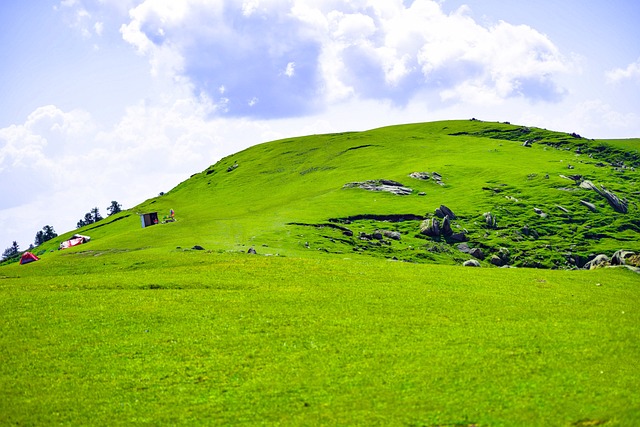
Gadsar Lake : Unexplored Breathtaking Lake
Table of Contents
ToggleOverview
Gadsar Lake is an alluring, unexplored high-altitude lake inGanderbal district of Jammu and Kashmir, India. This stunning lake is surrounded by snow capped peaks, pristine meadows, and crystal clear water, which combine to provide nature lovers, trekkers and all adventure enthusiasts with richly rewarding experience. If you are looking for lazing in the lap of Himalayas, or a thrilling high altitude trek, Gadsar Lake is where you should be heading.
This guide is designed to prepare trekkers for Gadsar Lake by providing tips on the geographical importance of the lake, its best trekking routes, the required preparation, and how to best enjoy the journey to this hidden treasure.





An Introduction to Gadsar Lake
Gadsar Lake is a beautiful pristine high-altitude alpine lake nestled in the lap of Kashmir Valley in India, near the Sonamarg area. It rests at a staggering height of 4200 meters (13,780 feet) and is often referred to as “Gadsar Sar.” This tranquil lake is surrounded by dense forests, vast alpine meadows and rugged mountain terrains which give it the title of being one of the most breathtaking and remote places in India. The lake, with its crystal clear water and mirror like reflection of the snow capped mountains surrounding it, creates an otherworldly ambiance for travelers and makes it a must visit for adventurers out there seeking thrill and beauty.
Gadsar Lake is located close to the Gadsar pass, which is a well-known high altitude, North Indian trade route that runs through Kashmir. Gadsar lake is part of the trekking route that passes through picturesque landscapes. Despite being lesser known compared to other Himalayan trekking marvels, Gdaasar lake surely musters attention due to the tranquility, untouched beauty, and sheer sense of accomplishment it brings to those who reach its shores.
The Gadsar Lake Trek: A Journey Through the Himalayas
The Starting Point: Sonamarg
The adventure towards Gadsar Lake commences at the mesmerizing alpine meadow called Sonamarg, which lies nearly 80 kilometers (50 miles) to the north of Srinagar, the capital of Jammu and Kashmir during the summer season. The name Sonamarg means Meadow of Gold and it attracts many adventure seekers and trekkers. The village has an astounding charm with fields of wildflowers decorating the meadows in summertime and magnificent views of several towering peaks like snow covered Thajiwas Glacier and well-known Zoji La pass.
The trek towards Gadsar Lake is roughly 75 kilometers (46.6 miles) long and takes 7 to 9 days, depending on weather, terrain and personal pace. This distance is covered through densely wooded forestry, meadows, rugged mountain paths and glaciers.
Trekking Route Details and Key Stops
i. Sonamarg to Nichnai (Day 1-2)
The trek starts at Nichnai, which is perched on top of the mountain at an impressive elevation of 3,570 meters (11,713 feet). Initially, trekkers climb upwards from Sonamarg valley, which involves a combination of clear trails, streams, and beautiful meadows of wildflowers, With every step towards the peak, the other mountains become increasingly more picturesque. By the end of hiking, Nichnai makes for a breathtaking camping site and is surrounded by mountain ranges on all sides.
ii. Nichnai to Gadsar Pass (Day 3-4)
From Nichnai, the trek gets more difficult as you try to reach Gadsar Pass. This portion of the trek is quite exhausting towards the end as it involves a steep climb on very high altitude. If the pass is achieved, it provides astounding views of the surrounding peaks and valleys. The weather can be unpredictable here, Who knows how fast terms can shift. It is common for trekkers to be surprised by a sudden snowfall, or frostbite cold temperatures.
iii. Gadsar Pass to Gadsar Lake (Day 5-6)
Upon passing the Gadsar Pass, hikers make their way down into a stunning valley where Gadsar Lake comes to sight. The lake is situated right at the foot of the mountains which makes it feel like a peaceful oasis. This serves as the pinnacle of the trek. Gadsar Lake’s crystal clear blue water set against lush green meadows and towering mountains, makes it one of the most scenic locations throughout Kashmir.
iv. Gadsar Lake to Sumbal (Day 7-9)
Once the lake is enjoyed to its fullest, the trek proceeds with further descents towards Sumbal, a quaint village at the foothills of the mountains. The last part of the journey is an easy stroll through the juniper clad alpine meadows, which allows trekkers to take in the natural beauty before they head back into the crowded world.
Complexity and Challenge Level of the Gadsar Lake Trek
There is a set of hurdles that one has to face while trekking Gadsar Lake which makes it moderately to realistic in range, especially because of the elevated height, sharp inclines, and steep slopping rocks. Unlike the Himalayan treks, it does not fall under the most advanced tracks, but does require a high level of stamina and experience of high altitude trekking. The average altitude of the trek is between 3,500 meters (11,500 feet) and 4,200 meters (13,780 feet) during which there is a major chance altitude sickness can affect trekkers if they do not acclimatize properly.
Being mentally prepared is just one factor, carrying the right equipment and gear is equally fundamental while trekking on less traveled paths facing unpredictable weather conditions, rocky streams and other physically challenging obstacles.
Best Time To Visit Gadsar Lake
Based on the variety of experience a person is looking for the ideal time shifts and is different for everyone. While Gadsar lake has breathtaking beauty in every season, there are still a few months that are more suited for trekking compared to others.
Summer (May to June)
In my opinion, summer is the ideal season to visit Gadsar Lake. The weather is very pleasant, ranging from 10 to 20 degrees Celsius (50 – 68 Fahrenheit). During Gadsar Lake’s summer season, meadows around the lake are green and adorned with wild flowers which are breathtaking for any nature admirer or a skilled photographer. In addition, the lake is free of ice, and its clear water allows the stunning snow-covered mountains to be vividly seen beneath it. Trekkers will appreciate the weather in summer: there’s little rain, the skies are clear, and there are no snowstorms.
Monsoon (July to September)
The monsoon season does transform the area, making it more green and bringing lush vegetation. However, it is generally not a fantastic time to go trekking at Gadsar Lake. The trails tend to be muddy and slipping is not uncommon. Furthermore, the likelihood of landslides is greatly increased. These elements combined makes trekking in the southwest monsoons very dangerous, especially for beginner trekkers.
Autumn (October to November)
From a traveler’s point of view, Autumn is also a good time to visit Gadsar Lake. During this season, the weather is cool and crisp, having an average temperature of 5° to 15°C (41° to 59°F). Clear skies are a common occurrence, which gives trekkers outstanding visibility of the peaks. As the colors of autumn start taking over, the meadows become golden which is utterly fascinating. There are less people than the summer months, making it a perfect time for people who enjoy peaceful treks.
Winter (December to February)
Gadsar lake normally freezes over in the winter months and its beauty is enhanced by the snow that is present everywhere. This region tends to look magical because of the snow dipped mountains and lakes. In addition to all of this, trekking is extremely difficult during this time due to excessive snowfall combined with low temperatures and the risk of avalanches. Only the most experienced of trekkers should consider the trek during these months. If you’re someone who enjoys winter sports, the other regions can provide great options for skiing during the winter.
Flora and Fauna Around Gadsar Lake
Gadsar Lake has it all for the nature lovers and wild life enthusiasts. From flora to fauna, this region is a hotspot for biodiversity, which makes it a popular trekking destination. The wildflowers, organisms, and vegetation that populate the region, most of them alpine in nature, bloom during the warmer months. Trekkers can, and often do, spot numerous types of wildflowers during the hot months. Such flowers include rhododendrons, orchids, forget-me-nots and alpine asters. These flowers add vivid hues, and when coupled with luscious, green meadows, the grandiose, snow-capped mountains serve as an even more stunning background.
The mountain goats, snow leopards, musk deer, Himalayan brown bears, and numerous avian species, all call this region home. Trekkers and wildlife fans can rally together in enthusiasm since it is also a breeding ground for golden eagles and griffon vultures. Ornithologists and birdwatchers will be exposed to the Himalayan monal too, so gather round, all fans of nature and wildlife.
Photography Tips for Gadsar Lake
Since Gadsar Lake is surrounded by luxurious meadows, stunning mountains, breathtaking farmlands and the pristine waters of Kashmir, it offers unmatched opportunities for taking stunning photos. Do not forget to capture the beauty this hidden gem while trekking, but before that read these tips:
- Golden Hour: The best part of the day for photography is the golden hours: early in the morning and later in the afternoon. The light is warm and soft during these times. This, combined with the majestic reflection of the mountains on the surface of the lake, is captivating to see.
- Wide Angle Lens: The lush, alpine meadows, rugged mountains, and clear blue waters of the lake can be captured in their full magnitude only through a wide angle lens. Other than that, this lens is vital for getting panoramic shots of the landscape.
- Long Exposure Shots: Use long exposure techniques to create soft, dreamy effects in the water while capturing the tranquility of the lake. In photography, a tripod is important for stable long exposure shots.
- Wildlife Photography: For those interested in wildlife photography, a telephoto lens will allow you to capture the animals from far away without them noticing you are there.
- Protecting Your Gear: The Gadsar Lake Trek is estimated to take about 2 to 3 days and on average people take around 2.5 days to complete the trek. This is due to the technically demanding and constantly changing terrain together with the unpredictable conditions. Make sure to use waterproof covers and sturdy cases to help keep your camera gear safe.
10. Essential Tips For Trekking Gadsar Lake
- Packing Essentials: Remember to pack lightly, but don’t forget your trekking necessities like robust trekking boots, warm clothes, a sleeping bag, a raincoat, a medical kit, a water bottle, and some light snacks. For the devices, don’t forget to carry a power bank and bring a camera to capture the surroundings.
- Leave No Trace: As you conduct your travels, ensure that you protect the environment by adhering to the Leave No Trace policy. Do not engage in behavior that would result in the pollution of Gadsar Lake, like littering, and make it a point to take your trash with you so the area’s beauty can remain untouched.
How to book Kashmir tour?
Contact a travel agency that specializes in Kashmir tours. You can reach out to the following for assistance:
- Phone:
- +91 7889 655596
- +91 7006 891267
- Email:
Inquire about tour packages, itineraries, and pricing, and confirm your booking for a memorable winter experience!
People Also Ask
What is Gadsar Lake?
Gadsar Lake is a high-altitude alpine lake located in the Gadsar Pass area of Kashmir, India. It is known for its stunning natural beauty, surrounded by snow-capped peaks and lush meadows.
How do I reach Gadsar Lake?
Gadsar Lake can be reached by trekking from Sonamarg, which is about 80 km from Srinagar. The trek typically takes 6 to 7 days and passes through the scenic Gadsar Pass.
What is the best time to visit Gadsar Lake?
The best time to visit Gadsar Lake is from late June to early September. During these months, the weather is more favorable for trekking, and the lake’s surrounding landscape is lush and vibrant.
Why is Gadsar Lake famous?
Gadsar Lake is famous for its breathtaking beauty, pristine waters, and serene surroundings. It is also known for its challenging trek, which attracts adventure enthusiasts from around the world.
What makes Gadsar Lake unique?
Gadsar Lake is unique because of its stunning location at an altitude of approximately 13,500 feet (4,115 meters), surrounded by snow-capped mountains and meadows full of wildflowers.
Can I visit Gadsar Lake during winter?
Visiting Gadsar Lake during winter is not recommended due to harsh weather conditions and heavy snowfall. The trekking routes are often inaccessible, and the lake is frozen during this time.
What is the Gadsar Lake Trek?
The Gadsar Lake Trek is a popular multi-day trekking route that takes hikers through alpine meadows, dense forests, and past glaciers, leading to the picturesque Gadsar Lake.
Is Gadsar Lake trek difficult?
Yes, the Gadsar Lake trek is considered moderate to difficult due to its challenging terrain, altitude, and weather conditions. Proper preparation and acclimatization are essential for completing the trek safely.
How long does it take to trek to Gadsar Lake?
The Gadsar Lake trek usually takes about 6 to 7 days to complete, depending on the route, pace, and acclimatization required for high-altitude trekking.
What is the altitude of Gadsar Lake?
Gadsar Lake is situated at an altitude of approximately 13,500 feet (4,115 meters) above sea level, which makes it a high-altitude trek.
Can I camp near Gadsar Lake?
Yes, camping near Gadsar Lake is allowed, and many trekkers camp near the lake to enjoy its tranquil surroundings and spectacular views. However, proper permits and a guide are recommended for safety.
Are there any accommodations near Gadsar Lake?
There are no permanent accommodations near Gadsar Lake. Trekkers usually camp along the trek route, with designated campsites set up by trekking agencies. Basic shelters may be available during the trek.
What should I carry for the Gadsar Lake trek?
When trekking to Gadsar Lake, carry essentials such as warm clothing, sturdy trekking shoes, a sleeping bag, a tent, food, water, a first-aid kit, a trekking pole, and a good camera for photos.
Is the Gadsar Lake trek suitable for beginners?
The Gadsar Lake trek is not recommended for beginners, as it requires a moderate to high level of fitness and experience in high-altitude trekking. However, those with prior trekking experience can handle the challenge.
What are the major attractions along the Gadsar Lake trek?
Along the Gadsar Lake trek, trekkers can enjoy views of alpine meadows, pristine rivers, glaciers, and a variety of wildflowers, as well as pass through dense forests and see other small lakes.
Is Gadsar Lake safe for trekking?
Yes, Gadsar Lake is generally safe for trekking if you are well-prepared and trek with an experienced guide. It’s important to acclimatize properly and be aware of the risks associated with high-altitude trekking.
What kind of wildlife can be seen near Gadsar Lake?
While trekking near Gadsar Lake, trekkers may spot Himalayan wildlife such as musk deer, brown bears, and a variety of bird species like Himalayan vultures and pheasants.
Are there any nearby lakes to visit along the Gadsar Lake trek?
Yes, several smaller lakes are found along the Gadsar Lake trek route, such as Vishansar Lake, Krishansar Lake, and Satsar Lakes, which are all known for their beauty and serene surroundings.
Can I do a day trip to Gadsar Lake?
No, a day trip to Gadsar Lake is not feasible due to its remote location and the long trekking duration required to reach the lake. The trek typically takes several days to complete.
How can I book a Gadsar Lake trek?
You can book the Gadsar Lake trek through various trekking agencies in Srinagar, which offer guided tours and provide necessary permits, camping equipment, and safety measures for the trek.
Is Gadsar Lake part of the Amarnath Yatra?
No, Gadsar Lake is not part of the Amarnath Yatra, though it is located in the Kashmir region and is a popular destination for trekkers. The Amarnath Yatra is a pilgrimage to the Amarnath Cave.
What is the difficulty level of the Gadsar Pass?
The Gadsar Pass, which is on the route to Gadsar Lake, has a moderate to difficult difficulty level due to the steep ascent and high altitude, making it challenging for trekkers.
What is the best way to prepare for the Gadsar Lake trek?
To prepare for the Gadsar Lake trek, it’s essential to improve your stamina and endurance through regular physical training, including cardio and strength exercises, and to prepare for high-altitude trekking by spending time in similar environments.
Can I hire a guide for the Gadsar Lake trek?
Yes, it’s highly recommended to hire a guide for the Gadsar Lake trek, especially if you are unfamiliar with the region. Guides help navigate the terrain, ensure safety, and enhance the overall experience.
Are there any permits required for trekking to Gadsar Lake?
Yes, trekking to Gadsar Lake requires permits from the local authorities, as the area is part of a protected region. Permits are usually arranged through trekking agencies.
How can I stay healthy during the Gadsar Lake trek?
To stay healthy during the trek, ensure proper acclimatization, drink plenty of water, eat high-energy foods, and take necessary precautions for altitude sickness.
What should I know about altitude sickness before trekking to Gadsar Lake?
Altitude sickness can affect trekkers above 8,000 feet (2,400 meters). Symptoms include dizziness, nausea, and headaches. To avoid altitude sickness, ascend gradually, hydrate well, and rest as needed.
What is the significance of Gadsar Lake?
Gadsar Lake holds cultural and spiritual significance for the local people. It is surrounded by scenic landscapes, making it an important destination for nature lovers and trekkers.
Can I visit Gadsar Lake as part of a Kashmir trekking tour?
Yes, Gadsar Lake is often included in trekking tours across Kashmir, especially for those interested in high-altitude treks and exploring the pristine beauty of the region.




